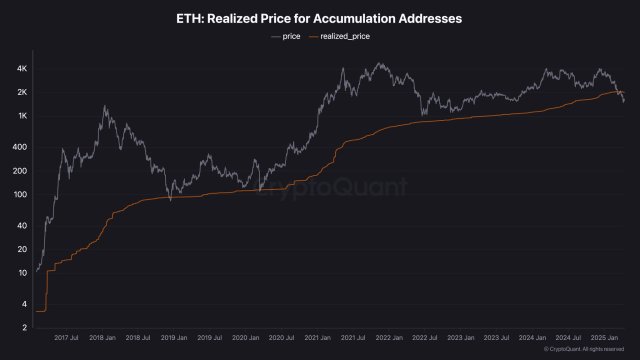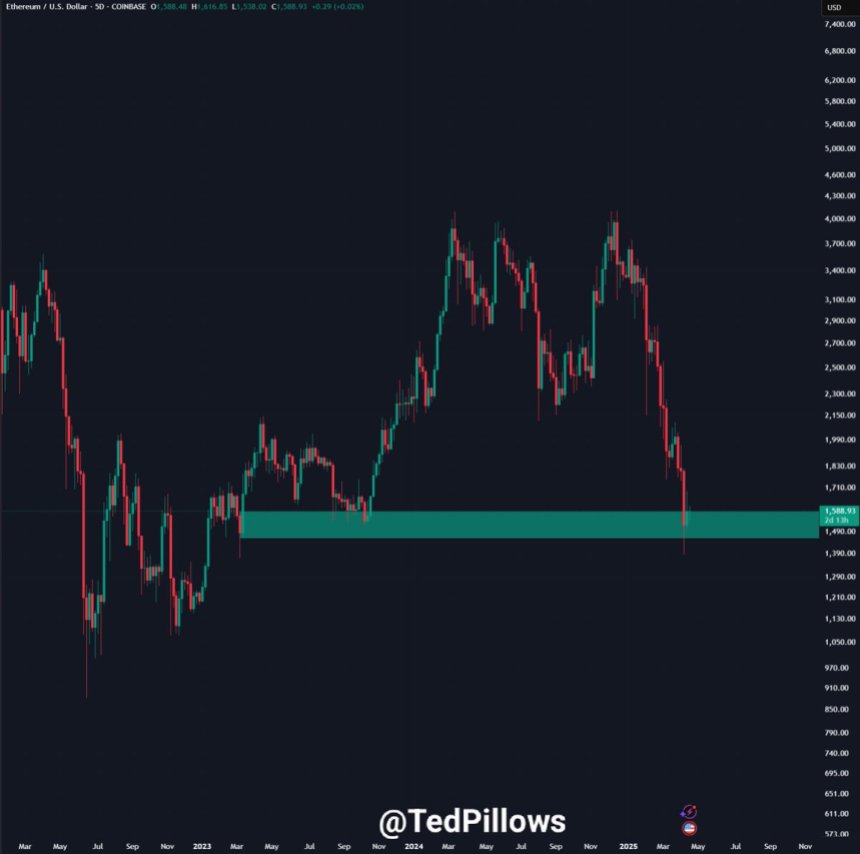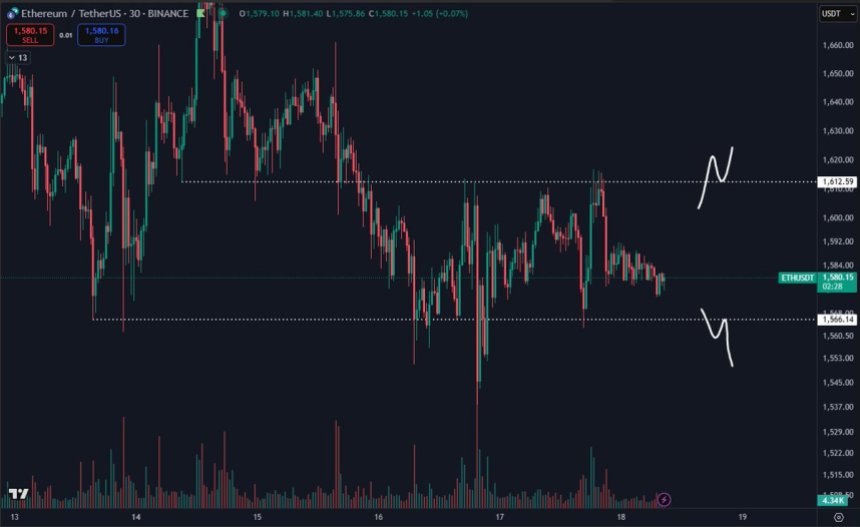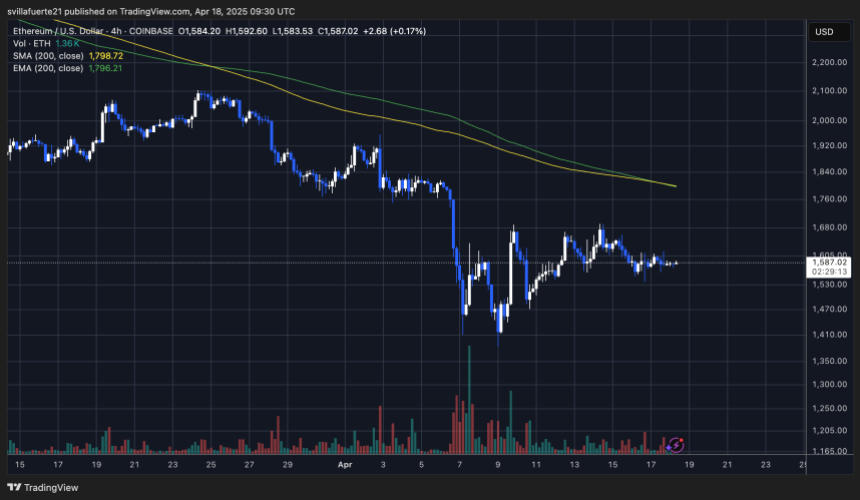Ethereum
Bernstein Analysts Turn Bearish On Spot Ethereum ETFs, Lack Of Staking Raises Concerns

Analysts at global asset management firm, Bernstein have expressed bearish sentiment for Spot Ethereum ETFs prospects. According to Bernstein analysts, Gautam Chhugani and Mahika Sapra, Spot Ethereum ETFs may see less demand than Spot Bitcoin ETFs due to a lack of staking features.
Analysts Predict Sluggish Demand For Spot Ethereum ETFs
In a new research report published on Monday, Bernstein analysts suggested that Spot Ethereum ETFs will likely experience a wane in investor demand following its launch. The analysts painted a bearish picture for the recently approved investment asset, noting that the enthusiasm for Ethereum Spot ETFs might be on a smaller scale than the initial excitement for Spot Bitcoin ETFs.
Chhugani and Sapra attributed their pessimistic predictions to the lack of ETH staking features in Spot Ethereum ETF filings. However, they wrote that the “basis of trade” for Spot Ethereum ETFs may likely improve over time, attracting more investors and ultimately improving liquidity.
The analysts also wrote that the basis of the trade would involve a unique strategy where investors purchase Spot Ethereum ETFs and sell futures contracts while waiting for prices to converge. This approach would potentially ensure that the ETF market gains ample liquidity and sustainability.
Considering Bernstein’s bearish outlook for Spot Ethereum ETFs, a potential drop in investor demand could lead to significantly reduced inflows. This outcome would be a stark contrast to the strong inflows observed after the launch of Spot Bitcoin ETFs.
After the United States Securities and Exchange Commission (SEC) approved Spot Bitcoin ETFs on January 10, and it launched a day after, millions of inflows flooded the market within a few days, fueled by investors’ demand and prior anticipation for the digital assets. These massive inflows also contributed to Bitcoin’s rise to new all-time highs above $73,000.
Bloomberg Analyst Reinforces Ethereum ETFs Launch Date
Spot Ethereum ETFs are likely to hit the market by July 2024. According to senior Bloomberg analyst, Eric Balchunas, asset management firm, VanEck has filed its 8-A form for Spot Ethereum ETFs. The analyst disclosed in an X (formerly Twitter) post that approximately seven days after VanEck filed the same form for Spot Bitcoin ETFs, the ETFs launched.
Uncanningly, July 2, about seven days after VanEck’s recent 8-A filing, is the date Balchunas predicted for the launch of Spot Ethereum ETFs. The Bloomberg analyst has doubled down on his previous prediction, indicating that Ethereum Spot ETFs could debut on this date.
Responding to his post, a crypto community member inquired about the inclusion of staking in features for the Ethereum Spot ETFs. Balchunas clarified with a “no,” indicating the SEC’s concerns about the classification of staking as an unregistered security. The community member further pointed out that the absence of staking would render Ethereum Spot ETFs significantly less appealing than their Bitcoin versions.
Featured image created with Dall.E, chart from Tradingview.com
Ethereum
Ethereum Accumulators At A Crucial Moment: ETH Realized Price Tests Make-Or-Break Point


Compared to other major crypto assets in the market, Ethereum’s price performance is still lagging, and it has been unable to make any significant upward move in months. Given the prolonged waning price performance, on-chain data shows that a substantial portion of ETH investors are currently in the red.
ETH Realized Price Nears Breaking Point
FundingVest, an on-chain data analyst and verified author, revealed that Ethereum’s market dynamics have reached a decisive moment. In the post on the X (formerly Twitter) platform, FundingVest highlighted that ETH’s accumulation addresses are now at a pivotal juncture as the altcoin’s realized price teeters on a critical make-or-break level.
After navigating the ETH Realized Price For Accumulation Addresses metric, it appears that the asset has broken below the cost basis of accumulation wallet addresses. This make-or-break moment is likely to determine whether Ethereum experiences more selling pressure that would shake the network’s faith or regain its upward momentum.
Presently, ETH is trending under the realized price of long-term holders, a crucial level that usually serves as solid support for the altcoin in bullish cycles. One thing is certain: When the price falls below the long-term holders’ realized price, caution is advised, as this development might lead to significant losses in the future. Meanwhile, a quick reclaim above this level hints at a potential bullish reversal in price.

According to the expert, this indicates mounting strain on wallets that amassed significant wealth between the 2020 and 2021 market cycles. Dips below the long-term holders’ realized price are uncommon and frequently brief in the past.
However, persistent weakness in the zone can point to a more significant change in the market. With ETH’s current market price dropping below the average cost basis of these accumulators, this raises questions about its sustainability and prospects.
ETH Supply In Profit Drops Below Levels Of Past Bear Market
ETH continues to face bearish pressure, limiting its potential for a major price rally. This persistent downward movement led to a historic low in the percentage of Ethereum supply in profit, indicating a weak market sentiment.
Crypto analyst and trader Venturefounder reported that the ETH percentage supply in profit has fallen to 40%. According to the expert, this level is lower than the last bear market cycle bottom, around 42% when the altcoin was trading at the $800 mark.
Considering the sharp drop, Venturefounder claims it is already a clear signal to deploy. Although the drop in supply profit calls for alarm, there is still a positive side to the development, especially if it falls to about 30%. Should it ever reach 30%, which is the green zone on the chart, the expert noted that it will create generational buy opportunities for investors.
Venturefounder also revealed in another post that the ETH Realized Price Multiple has declined to its last cycle bottom level. The expert considers this drop another on-chain buy signal for the altcoin.
Featured image from Pixabay, chart from Tradingview.com

Editorial Process for bitcoinist is centered on delivering thoroughly researched, accurate, and unbiased content. We uphold strict sourcing standards, and each page undergoes diligent review by our team of top technology experts and seasoned editors. This process ensures the integrity, relevance, and value of our content for our readers.
Ethereum
Ethereum Trades At Bear Market Lows: Fundamentals Signal Major Undervaluation

Reason to trust

Strict editorial policy that focuses on accuracy, relevance, and impartiality
Created by industry experts and meticulously reviewed
The highest standards in reporting and publishing
Strict editorial policy that focuses on accuracy, relevance, and impartiality
Morbi pretium leo et nisl aliquam mollis. Quisque arcu lorem, ultricies quis pellentesque nec, ullamcorper eu odio.
Ethereum is trading below critical resistance levels after enduring weeks of heavy selling pressure and lackluster performance. Since breaking below the psychological $2,000 mark, the price has dropped more than 21%, signaling growing uncertainty among short-term investors. This decline has raised questions among market participants, especially as Ethereum’s on-chain fundamentals remain robust.
Related Reading
Top analyst Ted Pillows shared insights suggesting that ETH is now trading near bear market lows—yet the network has never looked stronger. Over 95% of all stablecoin transactions are processed on Ethereum, and it still leads in Total Value Locked (TVL) across DeFi and Real World Asset (RWA) protocols. It is also the only altcoin with an approved spot ETF in the US, and numerous upgrades are lined up to improve its speed and reduce transaction costs.
Despite these strengths, Ethereum’s price remains suppressed, leading to growing speculation: is this just market sentiment at play, or could it reflect coordinated manipulation to shake out weak hands before a reversal? As Ethereum continues to dominate the utility narrative in crypto, many long-term holders see this downturn as a strategic accumulation zone, while others brace for more downside.
Ethereum Fundamentals Shine Despite Bearish Market Conditions
Ethereum is facing a critical test as it trades near major demand levels while macroeconomic uncertainty deepens. Global tensions persist as US President Donald Trump escalates his trade war with China. The recent 90-day tariff pause for all countries except China has done little to ease market fears. As economic pressure builds between the world’s two largest economies, investors are increasingly turning away from high-risk assets like crypto, driving volatility across digital markets.
Ethereum, like the broader crypto market, has suffered under this weight. The asset is now hovering just above bear market lows after a prolonged decline, prompting concerns over its short-term price action. Yet, despite the technical weakness, Pillows points to Ethereum’s strong fundamentals as a reason to remain optimistic.

According to Pillows, Ethereum remains the backbone of the decentralized finance (DeFi) ecosystem. It processes over 95% of all stablecoin transactions, commands the highest Total Value Locked (TVL), and leads the charge in Real World Asset (RWA) tokenization. It’s also the only altcoin the US has approved for a spot ETF, adding institutional legitimacy.
With several protocol upgrades ahead aimed at improving scalability and reducing costs, Pillows believes Ethereum’s current valuation could represent a long-term buying opportunity. As he puts it: if you believe in fundamentals, ETH remains the top bet among altcoins.
Related Reading
ETH Price Stuck In Range: Bulls Eye $1,800 Breakout
Ethereum is trading at $1,590 after several days of choppy price action between $1,500 and $1,700. The market remains stuck in this narrow range as bulls struggle to regain momentum amid broader macroeconomic uncertainty. The inability to reclaim key resistance zones has kept ETH under pressure, and a decisive breakout is needed to shift sentiment.

Bulls are currently eyeing the 4-hour 200-day Moving Average (MA) and Exponential Moving Average (EMA), both sitting near the $1,800 level. Reclaiming this zone would mark a major short-term victory for buyers and could signal the beginning of a recovery phase. A clean break above $1,800 would also invalidate the current lower-high structure and potentially drive ETH toward higher supply areas near $2,000.
Related Reading
However, the downside risks remain. If Ethereum fails to hold above current support levels and dips below $1,550, the next leg could send the asset beneath the $1,500 mark. For now, the $1,500–$1,800 corridor defines Ethereum’s battleground, and traders are closely watching for a breakout that sets the next major direction.
Featured image from Dall-E, chart from TradingView
Ethereum
Ethereum Price Stalls In Tight Range – Big Price Move Incoming?

Reason to trust

Strict editorial policy that focuses on accuracy, relevance, and impartiality
Created by industry experts and meticulously reviewed
The highest standards in reporting and publishing
Strict editorial policy that focuses on accuracy, relevance, and impartiality
Morbi pretium leo et nisl aliquam mollis. Quisque arcu lorem, ultricies quis pellentesque nec, ullamcorper eu odio.
Ethereum is trading at critical levels after enduring weeks of aggressive selling pressure. Since retracing below the key $2,000 mark, the second-largest cryptocurrency has struggled to regain bullish momentum. Currently down 21% from that level, ETH continues to hover near $1,580, reflecting a clear lack of conviction from both buyers and sellers.
Related Reading
The market has entered a period of extreme indecision. According to top analyst Daan, Ethereum’s price has remained notably compressed, barely moving over the past two days. This type of consolidation often precedes sharp price action in either direction, and traders are watching closely for signs of a breakout or breakdown.
Macroeconomic uncertainty continues to influence investor sentiment, with global trade tensions and monetary policy concerns keeping pressure on risk assets like Ethereum. For now, bulls must reclaim the $1,850 resistance zone to confirm a trend reversal, while a drop below $1,500 could open the door to deeper losses.
As volatility builds in the background, the current compression could be the calm before a storm—setting the stage for Ethereum’s next decisive move. Will it break out to the upside, or is more downside in store?
Ethereum Compression Signals Breakout As Macro Pressure Builds
Ethereum is facing a critical test as it trades at compressed levels following weeks of sustained selling pressure. The broader crypto market remains under pressure as global tensions escalate. US President Donald Trump’s trade war with China continues to shape macroeconomic sentiment, leaving investors cautious across all high-risk asset classes.
Despite last week’s announcement of a 90-day tariff pause for all countries except China, uncertainty remains. The unresolved status of US-China trade relations continues to weigh on markets and is one of the primary factors driving hesitation in price movement. For Ethereum, this has translated into extremely low volatility and a stalled price structure.
Daan shared insights suggesting that Ethereum’s price has been “extremely compressed” and has not shown meaningful movement for the better part of two days. According to Daan, this type of compression usually precedes a significant breakout—though the direction of that move remains unknown.

Investors and traders alike are closely monitoring this setup, as compressed price action typically leads to large, momentum-driven shifts. With broader macro risks still in play, Ethereum’s next move could define the short-term trend and set the tone for the market in the weeks ahead.
Related Reading
ETH Bulls Aim To Regain Control
Ethereum is trading at $1,590 after several days of sideways price action, hovering between support at $1,550 and resistance near $1,700. Despite holding above the lower end of this range, ETH has struggled to generate the momentum needed to break out and confirm a short-term recovery.

For bulls to establish a stronger position, ETH must push above the 4-hour 200-day moving average (MA) and exponential moving average (EMA), both of which continue to act as dynamic resistance. A breakout above these indicators could trigger renewed interest from traders and signal the beginning of a recovery phase.
However, the true test lies at the $2,000 level—a major psychological and technical resistance zone. Reclaiming this level would mark a shift in market sentiment and open the door to higher targets.
Related Reading
On the downside, failure to gain ground above the current range and a drop below $1,550 could quickly drag ETH below $1,500, increasing the risk of a deeper correction. For now, Ethereum remains in a consolidation phase, and the next decisive move will likely dictate whether bulls regain control or if sellers push prices into lower demand zones.
Featured image from Dall-E, chart from TradingView
-

 Market20 hours ago
Market20 hours agoCardano (ADA) Moves Sideways, But Bullish Shift May Be Brewing
-

 Altcoin15 hours ago
Altcoin15 hours agoAnalyst Reveals Dogecoin Price Can Reach New ATH In 55 Days If This Happens
-

 Market23 hours ago
Market23 hours agoXRP Consolidation About To Reach A Bottom, Wave 5 Says $5.85 Is Coming
-

 Altcoin19 hours ago
Altcoin19 hours agoPi Coin Price Soars As Pi Network Reveals Massive Community Reward Plans.
-

 Market16 hours ago
Market16 hours agoBinance Mandates KYC Re-Verification For India Users
-

 Market22 hours ago
Market22 hours agoCanary Capital Aims to Launch TRON-Focused ETF
-

 Market18 hours ago
Market18 hours agoSCR, PLUME, ALT Tokens Unlocking This Week
-

 Altcoin10 hours ago
Altcoin10 hours agoCardano Bulls Secure Most Important Signal To Drive Price Rally





















